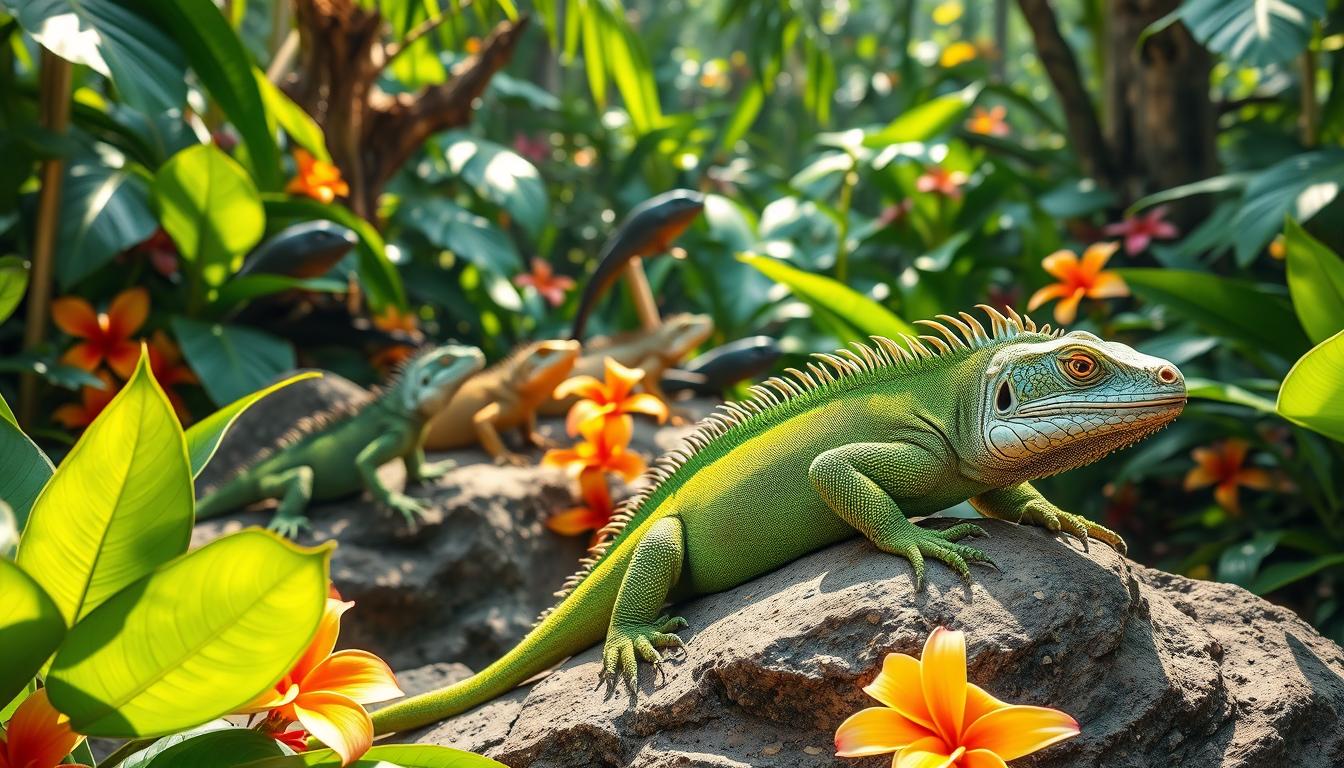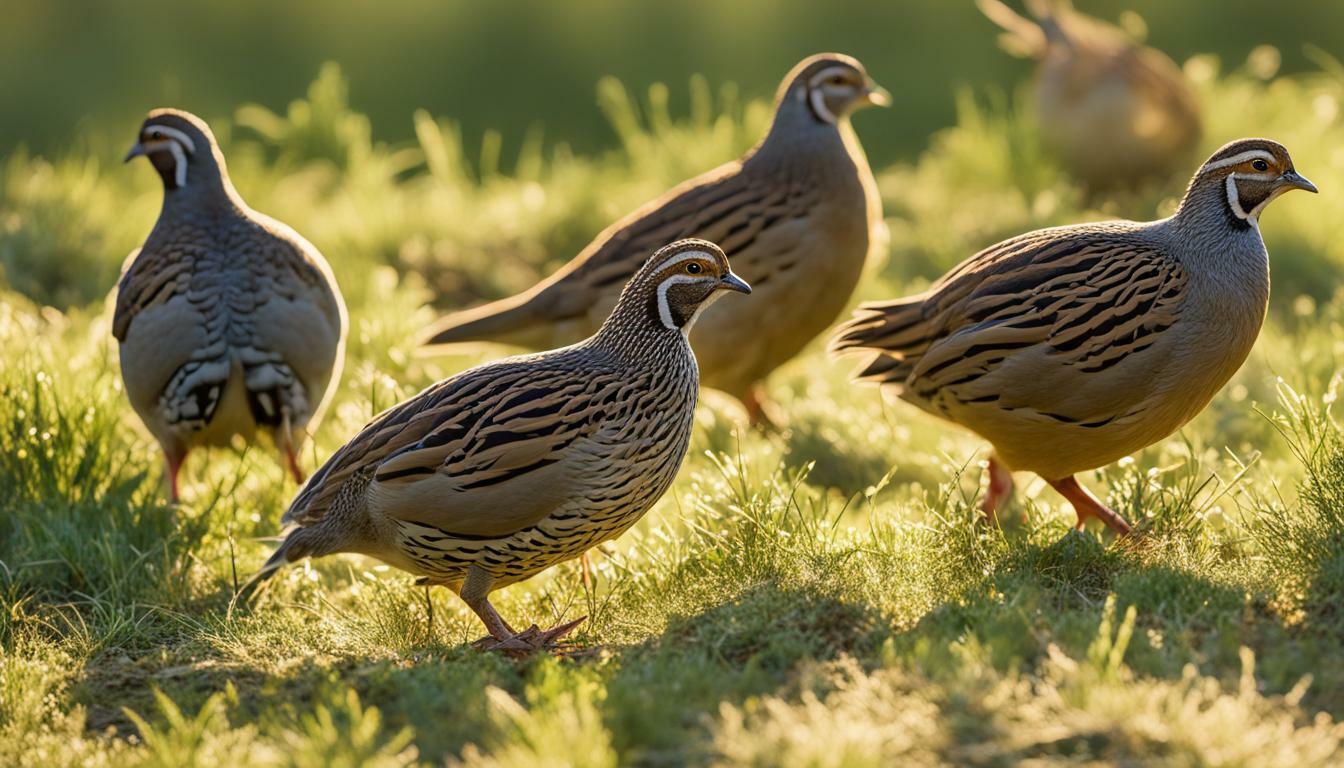15 Fascinating Fun Facts About Iguanas You Must Know

Table of content:
Iguanas live in South and Central America. Some are also in Florida, Hawaii, Texas, and the U.S. Virgin Islands. They can live up to 20 years in captivity and grow big.
These creatures have unique features and amazing survival skills. They are truly special. Let’s learn 15 fun facts about iguanas that will amaze you.
Physical Characteristics and Special Features
Iguanas are amazing reptiles with cool features. They have a “third eye” called the pineal gland or parietal eye. It’s on their head and helps them see light changes and movement.
Size and Growth Patterns
Green iguanas can grow up to 6 feet long and weigh 20 pounds. There are 45 iguana species, and their sizes vary. Some are small, while others, like the marine iguana, can dive 100 feet deep and stay underwater for 30 minutes.
Color-Changing Abilities
Iguanas can change their skin color. They have special cells called chromatophores. These cells help them change color based on their mood, temperature, and who they’re with.
Iguanas are truly special. They have a “third eye,” can grow big, and change color. These amazing animals fascinate everyone who sees them.
Fun Facts About Iguanas: Survival Skills and Behaviors
Iguanas are amazing creatures with cool survival skills and behaviors. They can swim and dive really well. They can stay underwater for up to 28 minutes! Their strong tails help them swim fast.
When they feel scared, iguanas can drop their tails. This trick distracts predators. Some iguanas can run up to 21 miles per hour. This helps them run away from danger.
Communication Methods
Iguanas talk to each other in cool ways. They use head bobbing, body posture, and dewlap extensions. Fast head bobbing means they’re upset or angry. Slow movements are for saying hello or showing love.
Defense Mechanisms
Iguanas also have other ways to stay safe. Some can make a bad smell when scared. Others puff out their dewlaps or get bigger to look scary.
These fun facts about iguanas and their iguana behavior show how smart they are. Learning about them helps us see how amazing nature is.
Diet and Habitat Requirements
Iguanas love to eat fruits, veggies, and leafy greens. They need dark leafy greens like collard and mustard greens. They also like romaine lettuce and kale.
Other good veggies are green beans, snap peas, and carrots. Squash and peppers are great too. But they should only have fruits like mangoes and bananas sometimes.
In the wild, iguanas might eat insects or snails. But too much animal food is bad for their kidneys. They live in trees to find food, sunbathe, and avoid predators.
Habitat Preferences
Iguanas can live in many places, like forests and cities. They like areas near water, like lakes and rivers. They also do well in farms and salty water places.
- Arboreal lizards living in tree canopies
- Can adapt to diverse habitats, including forested, open, coastal, and suburban areas
- Prefer environments with water bodies like lakes, ponds, rivers, and streams
- Can also thrive in agricultural settings and brackish water habitats
Health and Care Essentials
Caring for iguanas is important. They need special care for their iguana intelligence and iguana lifespan. They need the right habitat, temperature, and water to be happy.
UV Light and Temperature Needs
Iguanas need UV light to stay healthy. Their homes should have a warm spot at 90 degrees Fahrenheit. They also need a cooler area, around the mid-70s.
Keeping the right temperature is key for their health.
Hydration Requirements
Iguanas need humidity levels of 60-70%. They should be misted or soaked in shallow water often. This keeps them hydrated.
Iguanas are smart and can recognize their owners. They show awareness that needs careful care.
Handling and Safety Precautions
Wash your hands before touching iguanas. They can carry salmonella. Iguanas can bite if scared, so handle them gently.
Conclusion
Iguanas are amazing reptiles. They have cool features and behaviors that fascinate everyone. Their “third eye,” color-changing, and swimming skills are incredible.
But, owning an iguana as a pet is a big responsibility. You need to know how to feed them, what they like in their home, and how to keep them healthy. Learning about iguanas can help you care for them better.
There are many types of iguanas, from big green ones to small ones with spines. Exploring the world of iguanas is exciting. By learning about them and caring for them right, we can appreciate these amazing animals more.
Welcome. I’m Adreena Shanum, the proud owner of this website, and I am incredibly passionate about animals, especially poultry. I founded adreenapets.com as a labor of love, stemming from my desire to share my knowledge and experiences with poultry enthusiasts worldwide.




